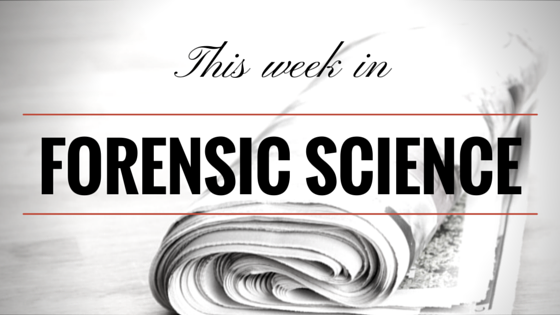No one has hours to scour the papers to keep up with the latest news, so we’ve curated the top news stories in the field of Forensic Science for this week. Here’s what you need to know to get out the door!
Debate Rages Over Quality of Science in Crime Labs (The Columbus Dispatch – 11/26/2016)
But the analysis of this trace evidence, especially in the years before DNA became reliable in the early 2000s, has been dubbed junk science by several experts including scientists, FBI analysts, judges and defense attorneys.
Regional Crime Lab in Andover Faces Crossroads in DNA Testing (StarTribune – 11/26/2016)
Tri County Regional Forensic Laboratory is scrambling to keep up as submissions pile up.
Purdue Developed Tech Could Play Vital Role in Crime Scene Forensics (WLFI 18 – 11/26/2016)
Purdue researchers are developing new 3-D imaging technology with hopes of making an impact in the field of forensics.
Yearlong Wait for DNA Testing Results Frustrates Utah Judge, Who Threatens to Put a Crime Lab Employee in Jail (The Salt Lake Tribune – 11/28/2016)
A Utah judge frustrated over a lack of DNA results from the state crime lab said if the results aren’t complete by next month, he’ll put a crime lab employee behind bars.
Experts: DNA Technique Not Used in NY Could Help in Karina Vetrano Case (Newsday – 11/28/2016)
In the nearly four months since 30-year-old Howard Beach jogger Karina Vetrano was strangled in Spring Creek Park, teams of NYPD detectives have worked the case with no suspects. The best lead so far has been DNA left on Vetrano’s body that hasn’t matched any profiles in state or national databases of convicted criminals, police said.
Governor Names Chair and Appoints Nine to Texas Forensic Science Commission (Forensic Magazine- 11/29/2016)
Governor Greg Abbott has appointed Mark Daniel, Dennis “Pat” Johnson, Sarah Kerrigan, and Jarvis Parsons and reappointed Jeffrey Barnard to the Texas Forensic Science Commission for terms set to expire September 1, 2017.
Pearl Harbor: More than 20 Americans Killed Are Coming Home Thanks to Forensic Science (Los Angeles Times – 11/29/2016)
This year 20 sailors of 2,403 Americans killed in the Dec. 7 attack have been ID’d and reburied with military honors thanks to lobbying and leaps in forensics
New Austin DNA Lab Chief Will Tackle 4,000 Cases with Contamination Concerns (New Scientist – 11/21/2016)
There is a new person in charge of theAustin police DNA lab with a lot on his plate after widespread issues were reported with thousands of cases.
Forensic Genealogist Helped Solve Phoenix Canal Murder Cold Cases (12News – 11/30/2016)
A California forensic genealogist with a Ph. D. in nuclear physics helped Phoenix police solve one of its most notorious cold cases.
Black Death ‘Plague Pit’ Discovered at 14th Century Monastery Hospital (Science Daily – 11/30/2016)
48 skeletons have been discovered in what researchers are calling a ‘Plague Pit.’ 27 of these were from children, say the researchers. This represents an extremely rare discovery, suggesting that the community was overwhelmed by the Black Death.
Experts Argue It’s Time to Stop Using Bite Marks in Forensics (Forensic Magazine – 12/01/2016)
Researchers are increasingly skeptical about the validity of bite-mark identification as trial evidence. A new paper in Journal of Law and the Biosciences describes the legal basis for the rise of bite-mark identification and reviews relevant empirical research on bite-mark identification–highlighting both the lack of research and the lack of support provided by what research does exist.
Sniffing Like a Dog Can Improve Trace Detection of Explosives (NIST – 12/01/2016)
By mimicking how dogs get their whiffs, a team of government and university researchers have demonstrated that “active sniffing” can improve by more than 10 times the performance of current technologies that rely on continuous suction to detect trace amounts of explosives and other contraband.
WOULD YOU LIKE TO SEE MORE ARTICLES LIKE THIS? SUBSCRIBE TO THE ISHI BLOG BELOW!


